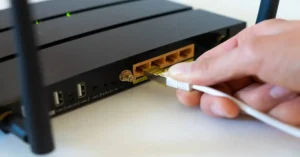A Selenium Grid setup enables you to test cases in many browsers. One element that has added to Selenium phenomenal success is its ability to perform automation testing across multiple browsers. The Selenium Grid, by far, has proven to be the most useful element of the entire Selenium project.
Previously, users could only install a certain amount of different browsers. Therefore, if you use Windows on a computer, you cannot test on Safari browsers. Similarly, you could not use Edge or Internet Explorer if you were testing on a Mac computer. Furthermore, running tests on a single machine required a lot of work. Additionally, there is no need to perform testing on just one computer at a time if you have multiple computers.
The ideal situation would be to perform the tests on a network of interconnected machines with a different browser environment to run many test cases concurrently, reducing the total testing time.
This scenario inspired the creation of Selenium Grid. It can help you test across all main operating systems, major websites, and mobile device browsers. All your functional tests can achieve a high level of browser coverage, ensuring that many potential clients will have the best possible experience.
Table of Contents
Selenium Grid Infrastructure for Parallel Testing:
Let’s look at the Selenium Grid infrastructure for parallel testing.
Hub
- You should deploy all your tests in the Hub as the starting point.
- There must be precisely one Hub in every Grid.
- Only one device, such as a desktop computer running Windows 7 and Internet Explorer as its web browser, can have the Hub enabled simultaneously.
- You’ll note that while the tests will be run on the machine that serves as the Hub, the node is where the automation of the browser happens.
Nodes
- The Nodes, which are instances of the Selenium software, will run the tests you added to the Hub.
- One or more nodes could be in a Grid at any particular time.
- A Node can be introduced on various devices, each of which might use a different browser or OS.
- The operating system of the computers running the nodes does not have to be the same as the hubs.
With Selenium Grid, you only need to run the test on a single computer, known as a Hub, but several different machines, known as Nodes, will carry out the execution.
When can you use Selenium Grid?
Selenium Grid should be used whenever you want to do either or both of the following:
- For running tests concurrently on multiple browsers, machines, and operating systems. By doing this, you can be sure that the program is fully compatible with a wide range of browser-operating system combinations.
- By saving time, you can hasten the execution of your test algorithms. The total number of tests could be finished roughly four times faster if Selenium Grid were set up to run.
Advantages of using Selenium Grid:
The following are the advantages of using Selenium Grid:
Dedicated Framework
Selenium Grid is compatible with many frameworks, including PyTest, Robot, MsUnit, Cucumber, CapyBara, PyUnit, and NUnit. The existence of specific frameworks makes it easier to verify that a web page is compatible with a user’s computer. The only thing left to do is familiarize yourself with the Selenium tools and learn how to use them efficiently.
Language Support
One of the queries to ask before working with a new test framework is whether or not it supports the programming language used within the company. Since it will be useless to you if the test framework does not support your programming language, it makes no difference how successful it is. Selenium Grid has an advantage over many other test environments due to this specific benefit. It is well known that it works with many well-known and common computer languages.
As a result, most programmers prefer Selenium Grid over other frameworks, regardless of their level of expertise. The availability of language support leaves you with no choice but to learn the specifics of Selenium Grid Automation.
Ability to Support Several Browsers
Testing a web program on various browser combinations is crucial when assessing it. This is due to the possibility that the web browser your client uses differs from the one you are testing on. Because of this, testing across various platforms must be finished. Because the Selenium framework can handle a broad range of well-known web platforms, you won’t have any trouble completing the task of cross-browser testing.
Support for various Operating Platforms
The requirement of making significant changes to the script to port it to a different operating system is one of the challenges you might encounter when testing a web application across various operating systems. However, since Selenium is bundled with support for numerous operating systems, switching from one operating system to another will only require a few changes to the Selenium test automation script. As a result, you can test the web application across several operating platforms and save significant time and effort.
Free and Open Source Software
Selenium has many advantages, including the fact that it is open-source and its creator and user communities are very vibrant. Since the initial version, version 2.4, was released, Selenium has experienced numerous significant changes due to this community. Additionally, because there is such a vibrant community, all freshly created Selenium versions are tested extensively to guarantee their reliability. Additionally, because it is free, more software developers can use it and benefit from the chance to do so.
Parallel Testing
When testing, two distinct strategies can be used. One approach involves running tests sequentially, which takes much longer than running them concurrently. The Selenium automation testing framework can greatly assist in this scenario because it allows concurrent test execution. As a result, you’ll not only have more time, but your tests will also be of a higher caliber.
Effective and Insightful Research
Whether you use Selenium for testing automation or choose manual testing, it does take effort. Additionally, it’s crucial to monitor how the testing method is progressing while it’s being done continuously. Manual reporting is an additional potential cause of irritation. However, Selenium can be integrated with several external tools to deliver precise reports that will allow you to follow the development of the testing process.
Selenium Grid Configuration & Requirements
It would help to verify that the Java Runtime Environment (JRE) or, best yet, the Java Development Kit (JDK) is installed on your computer. Try using older JDK versions that have already been tried and confirmed, such as JDK SE 08 or 09, even though most people advise using the most current JDK version. You can obtain the most current version of it if you’d like.
Decompress the Selenium Standalone server JAR files’ data after downloading them.
Selenium Hub configuration:
Establishing a hub would be the first step in creating a Selenium Grid. Open a command window or terminal and go to the location where the Selenium Standalone Server’s jar file is located.
Selenium Node Configuration:
The next stage in preparing Selenium Grid for parallel execution would be to launch a node since the Hub has already been created. You start by visiting the other machines where you want to configure the network nodes. To repeat, a JRE and JDK should be installed on these computers.
Launch a command prompt or terminal on the node machine, and then go to the directory where you saved the browser driver files.
What is Parallel Testing?
In contrast to parallel test execution, the sequential testing method involves testing various sections or functionalities one at a time. Even when apps are tested across various browsers, the testing is carried out sequentially on each browser. Such testing involves a significant quantity of work.
The use of parallel testing aids in reducing the effort and time required for implementation, which eventually results in a shorter period before delivery. It is particularly beneficial when testing for localization, internalization, internationalization, and cross-browser testing. We can run both versions concurrently to locate issues noticeably faster when we have access to two different software versions, and we need to test their stability and compatibility.
How to use a Selenium Grid for parallel test execution?
To start with the Grid for parallel testing, the below-listed actions should be performed:
- Set up your Hub
- Set up your node
- Create the file in an XML format
- Now execute your tests
- Review the received results.
Disadvantages of using Parallel Testing:
For parallel testing, independent modules must be done for various modules to function concurrently. Modules with dependencies cannot be used to execute the parallel testing. One needs to have a thorough understanding of the product and its movement to use parallelization effectively.
Even though parallelization can be useful for testing cross-browser compatibility, its ability to cover a wide range of browsers will be constrained unless it is used in conjunction with distributed testing, which will build up a setup of numerous machines and browsers. Even then, only a select few platforms will be covered.
Time for Parallel Testing
Because it is necessary to have access to various platforms and browsers to effectively run the tests in Parallel, compatibility testing with parallel testing costs more money. Additionally, it’s conceivable that we’ll reach a point where accessing all browsers and versions is impossible. Users can access various operating systems, web browsers, and versions on the real device cloud. While using a variety of browsers and versions, automated parallel tests can be run.
With the help of LambdaTest, a cloud-based platform for cross-browser testing, you can review your website or application on more than 3,000 various combinations of operating systems, browsers, and versions.
Winding up!
There may be some issues if you manually set up the Selenium Grid. The information above will clear all your doubts about the Selenium Grid and how it can be effectively set up for parallel testing. Selenium Grid is widely used for running multiple tests on various platforms and browsers using their Node-hub concept. Do check the prerequisite before you start testing, and can use a platform like LambdaTest to receive the desired results.





